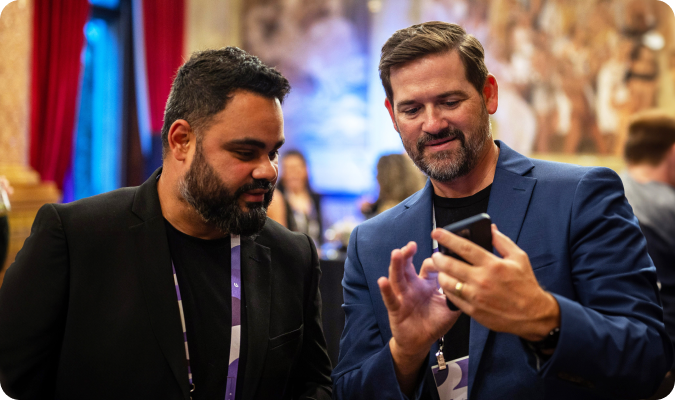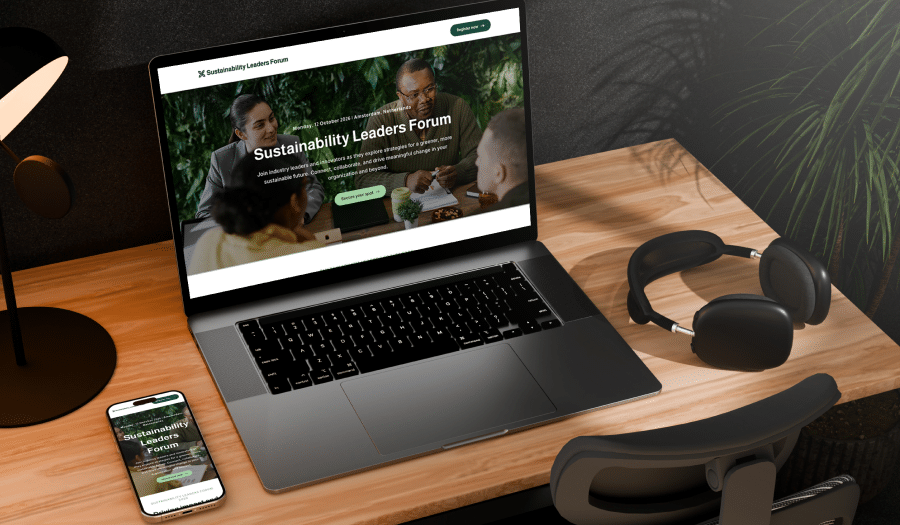
Every event organiser wants to be remembered by:
- The client – for the ability to come up with exciting, original ideas, and deliver the “wow” factor (even when the budget is less than generous), and
- The attendees – for doing something special; something they haven’t seen before and is worth talking about.
In this post, we’re sharing one of our favorite techniques to get your creative brain buzzing, as well as a bunch of creative event planning ideas for magic moments and memorable events.
How to write an event plan, creatively
We know that every successful event starts with an event plan, but have you considered if the way you’re producing the plan could be stimulating or stifling creativity?
Writing an event plan creatively involves not only considering and presenting the logistical details (e.g., size, location, budget) but also infusing your unique ideas, themes, and experiences to make the event memorable. Here’s how.
1. Define the goals of the event
One of the most common mistakes that event planners make is being innovative just for the sake of it, and forgetting why they are organising the event. To avoid this, the first step is to clearly define your purpose, goals, and objectives, keeping in mind your client’s brand identity and target audience. These will act as your North Star, helping keep you on track throughout the event planning process.
2. Create a mind map
A mind map provides a visual representation of your event planning process allowing you to see the overall structure and relationships between different elements. It also helps promote creativity and collaboration as you can brainstorm and explore different possibilities for each element.
The central element of the mind map is the event title, so once you have decided on your event’s purpose, the next step is to think of the event title, keeping in mind that the title is one of the first elements that will influence your attendees’ decision to attend (no pressure). A good event name:
- Gives clear details about the event
- Creates intrigue and curiosity
- Isn’t too long!
Next, using either paper or a digital mind mapping tool write your event’s title (or a placeholder if you haven’t quite figured it out yet) in the centre of a piece of paper and draw 5-6 branches around it. Each branch represents different structural elements of the event, such as:
- Basic info
- People (including target audience and invitations)
- Event marketing and PR
- Location (venue selection)
- Budget (including financial planning)
You can customise each branch into further subtopics that delve deeper into specific aspects of those elements.
Once you’ve completed the mind map, you can share it with your collaborators to gather their feedback, and suggestions, and ensure everyone is on the same page.
3. Basic info
One of the most important branches in your mind map should be the one called “info”. Here, you will note down the basic and most important information about your event. For example:
- Event date and time (don’t forget to check the calendar to ensure your event isn’t competing with others in your niche and for any important holidays).
- Funds available for investment
- Who is responsible for certain activities
4. Decide who is coming to your event
The “people” branch is another important part of your mind map, as it helps you determine the total number of people who will be present in the room. Consider all personnel in addition to attendees. For example:
- Attendees
- Waiters and bar-staff
- Photographers
- Event organisers
- Suppliers
- Vendors
- Security
- Press
- Influencers
Here, you can also define your target audience and design your event for audience engagement by thinking about the unique experience you want to create for them. Consider their preferences, interests, and aspirations.
5. Get out of your comfort zone
While it’s nice to feel comfortable at work, to stimulate creativity you often need to get out of your comfort zone. Here are some ideas
- “No judgment” idea sessions: host an idea session where the focus is solely on generating ideas, with no criticism or evaluation at the initial stage. This allows for free-flowing creativity and encourages your team to think freely and contribute without fear of judgment.
- Writing or speaking bizarre phrases: this can help break away from conventional patterns and encourage unconventional ideas. However, it’s crucial to ensure that the context and purpose of your communication remain clear. While creativity is encouraged, it should not compromise the clarity and effectiveness of your message.
- Get moving: research shows physical activity boosts creativity, problem-solving, and cognitive functioning including attention, focus, and memory. Taking a break from routine can also help to clear your mind and get a new perspective on things. Switch up the office for a walking meeting to get some fresh air and exercise at the same time.
Creative event planning ideas to wow clients and attendees
If your creative juices aren’t yet flowing, don’t worry, because ours are, so here are a bunch of creative event planning ideas to create a memorable event (without breaking the budget).
Special or iconic venues
Hosting your event in a unique, iconic, or unexpected venue can become a talking point itself, and leave a lasting impression on attendees. It could be a historical landmark, rooftop terrace, art gallery, or even a unique outdoor location.
Personalised catering
Offer personalised catering options to accommodate various dietary preferences and restrictions. Consider interactive food stations, themed food presentations, or even hiring a chef to provide live cooking demonstrations. Personalised touches in the catering experience can elevate the overall event ambience and leave attendees impressed.
Sponsored prizes
Partner with sponsors to offer exciting prizes or giveaways throughout the (which is also an excellent way for your sponsors to capture leads!). These prizes can range from exclusive experiences, products, or services related to the event theme. Incorporating sponsored prizes adds an element of excitement and exclusivity, enhancing the overall attendee experience.
Choosing an event theme
Selecting a unique and engaging event theme can set the tone and create a memorable experience. A well-executed theme can be reflected in the decor, entertainment, activities, and even attendee dress code. Think outside the box and consider themes that align with the event’s purpose or resonate with your target audience.
Live demonstrations
Incorporate live demonstrations or interactive experiences into your event program to engage and captivate attendees. This could involve guest speakers, artists, performers, or industry experts showcasing their skills or providing hands-on workshops.
Branded everything
Infuse your event with branded elements to create a cohesive and immersive experience. From branded signage, merchandise, and event collateral to customised interactive installations and digital experiences, consistent branding creates a professional and memorable impression.
Utilizing local resources/talent
Showcase and support local resources and talent in your event. Collaborate with local artists, musicians, caterers, and vendors to create a unique and authentic experience. Incorporate locally sourced food and beverages, showcase local performers, or include artwork and installations created by local artists.
Remember to tailor these ideas to suit your specific event objectives and target audience. By incorporating these creative elements into your event planning, you can wow your clients and attendees, leaving a lasting positive impression and ensuring a memorable experience.
Conclusion
Writing a detailed, thorough, and logical plan for your event is crucial to its success, just don’t forget to have fun with it! Try some of the ideas in this post and let your creativity and imagination shine through – your client and attendees will thank you for it!
This is a guest blog post that was written by Lori Jones.
Need a centralised platform to manage all aspects of your events from start to finish? Get a free demo from EventsAir.
Best Practice | Event Planning & Management
See EventsAir in action
Discover why 12,000+ event professionals trust EventsAir to deliver effortless events, every time.




